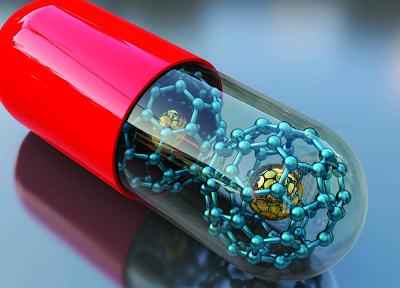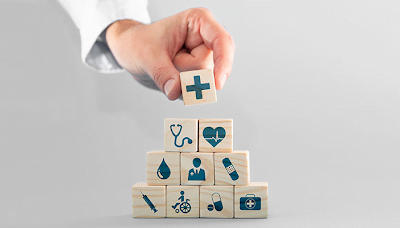Internet of Things (IoT)-connected gadgets have enabled remote monitoring in the healthcare industry, unlocking the potential to keep patients safe and healthy while also allowing physicians to provide exceptional care. It has also enhanced patient involvement and satisfaction as interactions with doctors have grown easier and more efficient.
Furthermore, remote monitoring of a patient’s health helps to shorten hospital stays and avoid readmissions. IoT is also having a huge influence on lowering healthcare expenses and increasing treatment results. After extensive research, I have listed the 8 best examples of IoT in healthcare 2022.
How Can IoT Be the Future of Healthcare?
Healthcare devices are one of the IoT market’s fastest-growing segments. Aside from monitoring patients’ health, IoT devices are also beneficial in a variety of other areas in hospitals. Sensor-enabled IoT devices are used to track the real-time position of medical equipment such as wheelchairs, defibrillators, nebulizers, oxygen pumps, and other monitoring devices.
The deployment of medical personnel at various places may also be tracked in real-time. Infection propagation is a big problem for hospital patients. IoT-enabled hygiene monitoring devices aid in the prevention of infection in patients.
IoT devices also aid in asset management, such as pharmaceutical inventory control, and environmental monitoring, such as checking refrigerator temperature and controlling humidity and temperature.
The Internet of Things (IoT) is undeniably revolutionizing the healthcare business by redefining the area of devices and people interaction in delivering healthcare solutions. In healthcare, IoT applications assist patients, families, clinicians, hospitals, and insurance companies.
Top 8 Examples of IoT in Healthcare:
Remote Patient Monitoring:
The most popular use of IoT devices in healthcare is remote patient monitoring. IoT devices may automatically gather health parameters such as heart rate, blood pressure, temperature, and more from patients who are not physically present in a healthcare institution. This reduces the need for patients to go to providers or to collect it themselves.

When an IoT device captures patient data, it sends it to a software application where healthcare professionals and/or patients may examine it. Algorithms can be used to evaluate data and propose treatments or produce alarms. For example, an IoT sensor that identifies a patient’s exceptionally low heart rate may create an alarm so that healthcare personnel may intervene.
Hand Hygiene Monitoring:
Traditionally, there hasn’t been a clear way to guarantee that physicians and patients inside a healthcare institution cleansed their hands correctly in order to reduce the danger of transmitting infection. Many hospitals and other healthcare facilities now utilize IoT devices to remind patients to clean their hands before entering hospital rooms.

The gadgets can also offer guidance on how to sterilize to reduce a specific danger for a certain patient. One significant limitation is that these gadgets can only remind individuals to wipe their hands; they cannot do it for them. Nonetheless, evidence indicates that these devices can cut infection rates in hospitals by more than 60%.
Connected Inhalers:
Asthma and COPD are two examples of conditions that frequently entail episodes that occur unexpectedly and without warning. IoT-connected inhalers can aid patients by tracking the frequency of attacks and gathering data from the surroundings to help healthcare practitioners understand what prompted an attack.

Furthermore, linked inhalers can inform patients when they leave their inhalers at home, putting them in danger of having an attack without their inhaler, or when they use the inhaler incorrectly.
Ingestible Sensors:
Data collection from within the human body is often a dirty and disruptive endeavor. No one appreciates having a camera or probe inserted into their digestive tract, for example. With ingestible sensors, it is feasible to acquire information from digestive and other systems in a far less intrusive manner.

They can offer information on stomach PH levels, for example, or assist identify the cause of internal bleeding. These gadgets must be tiny enough to be ingested comfortably. They must also be able to disintegrate or transit through the human body on their own. Several firms are hard at work developing ingestible sensors that suit these requirements.
Regulation of Diabetes:
Most patients with diabetes find it inconvenient to travel for daily health check-ups. Patients can now use automated insulin administration devices to manage their diabetes. They monitor blood sugar levels and provide diabetics with a constant supply of insulin as needed.

Manual dosing is also possible with these devices. Many new biotech firms are bringing new ones to market, and Abbott and Medtronic include them as part of their comprehensive diabetic care.
Maintaining Cleanliness Standards:
Aside from monitoring patients’ health, IoT devices are also beneficial in a variety of other areas in hospitals. A clean surrounding is mandatory in healthcare. Infection propagation is a big problem for hospital patients. In order to keep patients from being sick, IoT-enabled hygiene monitoring devices are utilized.

IoT devices also aid in asset management, such as pharmaceutical inventory control and environmental monitoring. This includes checking refrigerator temperature and controlling humidity and temperature.
Wearable Biosensors:
The wearable biosensor is an important piece of technology that enables the operation of virtual hospitals and other sorts of care, illness prevention, and disease diagnosis. These compact and lightweight gadgets, which are worn on the body, monitor vital indicators like temperature, heart rate, and breathing rate, giving health professionals valuable insights into the course or early beginning of a disease.

A recent study employed wearable biosensors to monitor patients with Multiple Sclerosis (MS) both inside and outside of a clinic setting. Researchers were able to collect data from patients during the day and night for eight weeks using Cardiac and Activity Monitoring (CAM) devices. This highlights the relevance of wearable smart devices in the context of monitoring patients with chronic diseases.
Privacy Conundrum:
Users using specific medical equipment, such as wearable biosensors and hospital-issued pulse oximeters, may feel at ease sharing their health information with medical specialists. With products created by technological corporations such as Kinsa, Apple, and Google, the problem of data privacy becomes murkier.

Even if this information is being collected for a good cause, can they be certain of how it will be shared and used? This is a trust barrier that businesses will have to fight and overcome as the usage of the internet of things for healthcare becomes more widespread and accessible, and the number of available devices grows.
Conclusion:
As we get closer to a world of technologically enabled remote healthcare, customers should be informed of where their data is going. While the advantages of increased health awareness, monitoring, and treatment are enormous, they should not be at the price of privacy and data security. It is critical to remain watchful and aware.
IoT in healthcare is changing how we live, extending how medical practitioners may use data to treat patients and improve results, and altering how healthcare organizations such as hospitals and insurance companies work. The incredible expansion of the IoT market is not slowing down, and technological breakthroughs will continue to fuel potential. It will be fascinating to see how the sector develops.





